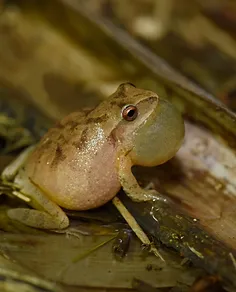 As I begin this column, the temperature outside is 23 degrees. The sun is shining but the air doesn’t feel at all like spring. I fear it’s too early to plant a pot of purple pansies to place on my porch. But a bouquet of Lenten Roses brightens my kitchen windowsill and the daffodils poking up in my yard will become a riot of yellow any day now. Sandhill cranes are winging their way north in droves. Daylight arrives a little earlier and hangs on a little later.
As I begin this column, the temperature outside is 23 degrees. The sun is shining but the air doesn’t feel at all like spring. I fear it’s too early to plant a pot of purple pansies to place on my porch. But a bouquet of Lenten Roses brightens my kitchen windowsill and the daffodils poking up in my yard will become a riot of yellow any day now. Sandhill cranes are winging their way north in droves. Daylight arrives a little earlier and hangs on a little later.
And while I love all these signs of impending spring, none of them is my favorite.
I know that winter is really and truly in the rear view mirror when the peepers begin to sing.
What, you might ask, is a peeper? A baby bird? Nope. A baby chick? Nope again. A disgusting artificially-colored and artificially-flavored marshmallow bunny that magically hops into a child’s Easter basket? Strike three.
Spring peepers are “chorus frogs.” They’re native to the eastern United States, with a habitat that extends from north Florida all the way to Canada. These little frogs, about the size of a paper clip, spend the cold months in the woods, buried under fallen logs or nestled deep into tree bark. Their bodies produce an antifreeze that keeps them alive even in frigid temperatures, when most of their internal organs freeze solid and their hearts stop pumping. The frogs appear to be dead. Yet when spring rolls around, they wake up and quickly resume their normal lives.
Amazing, right?
The first thing spring peepers do once they get their warm weather wits about them is move to shallow wetlands, preferably ones without fish. Then the boy peepers begin calling to the girls. They do this by expanding and contracting their balloon-like vocal sac. The call is a high-pitched whistle repeated about twenty times a minute. Bigger, older, stronger males peep faster and louder than the youngsters and, not surprisingly, tend to attract more females. Here’s the really cool part. Peepers often sing in trio, with a deep-voiced frog starting the call and two others, with higher voices, joining in.
When’s the best time to hear peepers? Right now, especially early in the morning and then again around dusk. They’ll peep any time during the day if it’s cloudy or rainy. Don’t delay seeking out the peepers. Their wondrous life cycle moves quickly. Male peepers fertilize the females’ eggs as they’re being laid. Within a few days, tadpoles hatch and begin their brief and fascinating metamorphosis into frogs. When warm weather arrives and wetlands begin to dry up, the peepers–young and old– return to the forest, where they make their homes under leaf litter until the weather grows cold again.
I’ve been taking advantage of my early-voting duties at the Putnam County election office to enjoy the peepers in the shallow pond just north of the parking lot. It’s filled with cattails and other wetland grasses and bordered on the north and west by woods. A few days ago, I rolled up my britches legs, pulled on my muck boots and slowly and quietly waded in, hoping to catch at least a glimpse of some tadpoles or adult peepers.
Alas, those who warned me that peepers were shy and hard to spot were right. I saw only mud and vegetation and a whole lot of trash, which I gathered up and hauled to the dumpster.
So for now, that’s all I have to say about spring peepers, except to point out–in case you missed it–that I finally got the chance to use the wonderfully alliterative phrase “plant a pot of purple pansies to place on my porch,” which is something I’ve always wanted to write in a newspaper column.
(February 24, 2024)